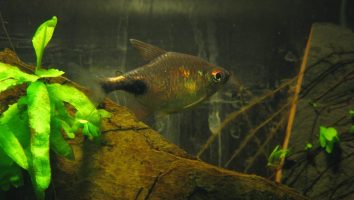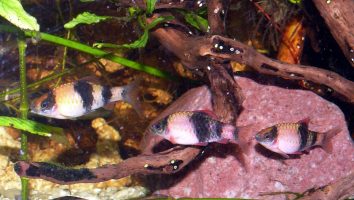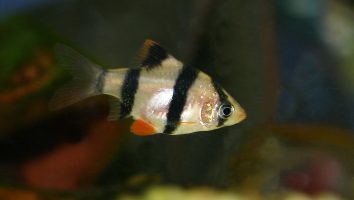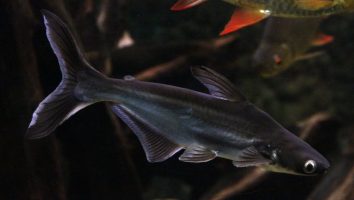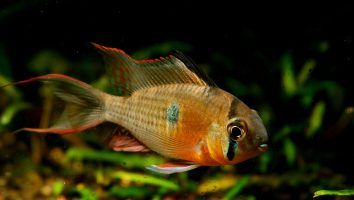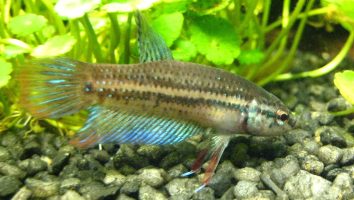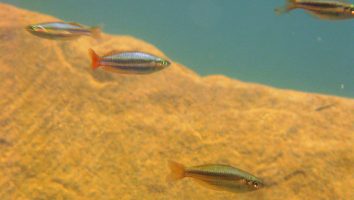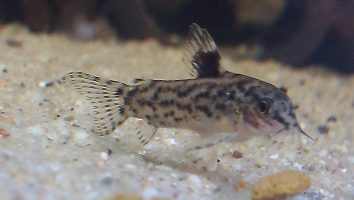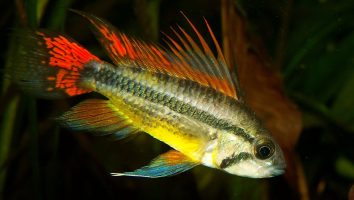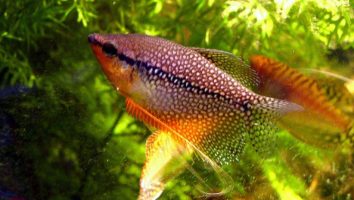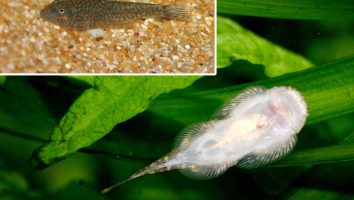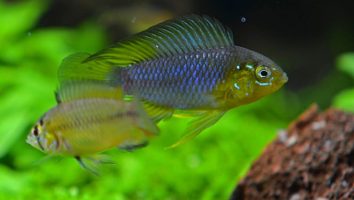The harlequin rasbora is a beautiful and peaceful freshwater fish that’s perfect for beginner aquariums.
This Fish Academia guide will teach you everything you need to know about harlequin rasbora care. You’ll learn about their diet, size, lifespan, and more!
Table of contents
Species overview
Harlequin rasboras (Trigonostigma heteromorpha) are a species of freshwater fish that are found in Southeast Asia. They are heavily concentrated in Thailand and Malaysia, but have also been found in Indonesia, Singapore, and Vietnam.
They prefer slow-moving waters with a lot of vegetation. This could be anything from a swamp to a river with a lot of plants growing along the banks.
Harlequin rasboras are a schooling fish, which means they like to live in groups. In the wild, these groups can number in the hundreds or even thousands!
These fish are very peaceful and make a great addition to any community tank. They are also one of the few freshwater fish that can be kept in a saltwater aquarium.
Appearance
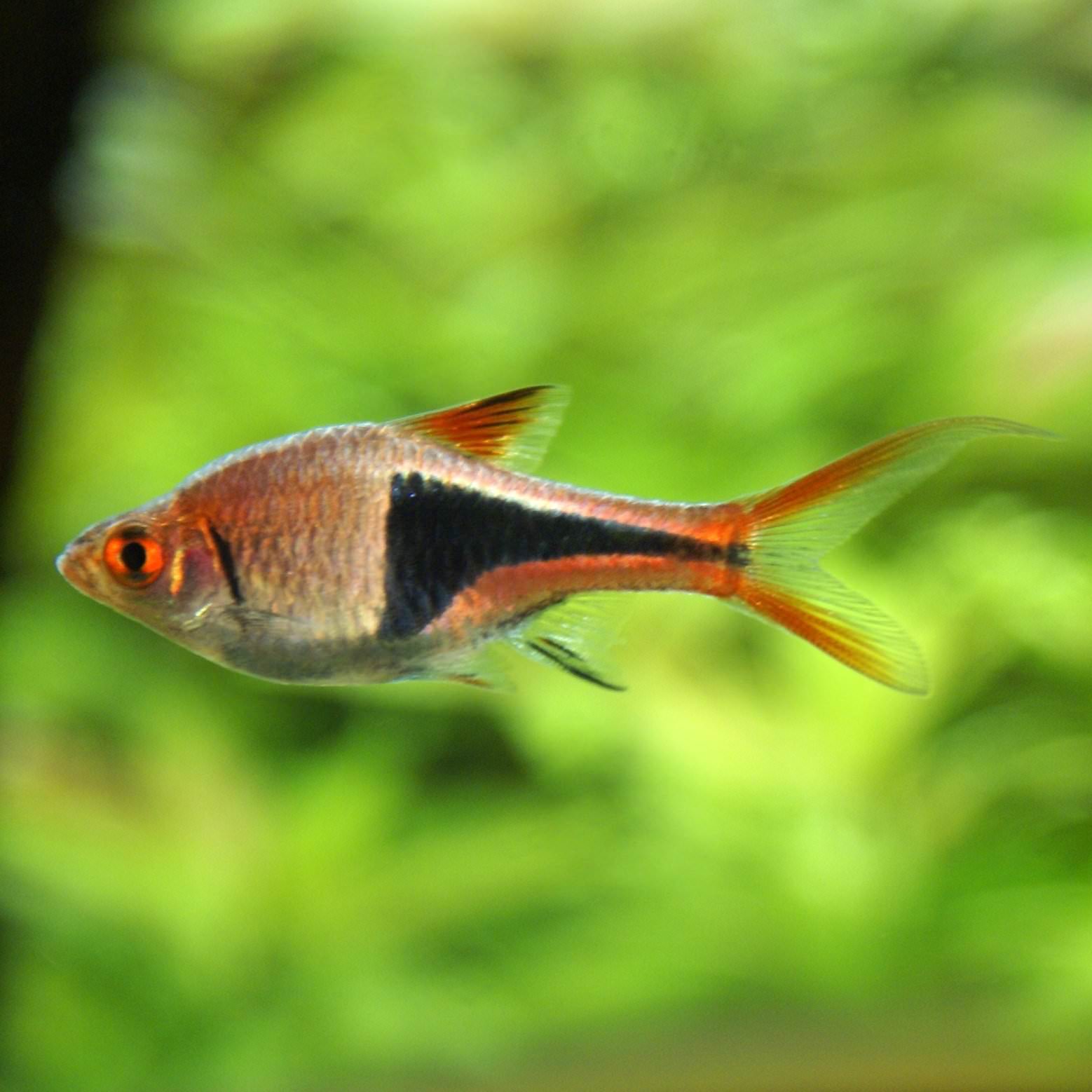
The Harlequin Rasbora is one of those fish that just looks happy. They have a very distinct coloration that is orange with black spots. The spots are large and well-defined, which really makes this fish stand out in a crowd.
The Harlequin Rasbora also has a very long and slender body shape. This gives them a sleek look that is further enhanced by their long and flowing fins.
The dorsal fin on this fish is quite tall and starts about two-thirds of the way back on the body. The anal fin is similar in both size and placement.
The caudal fin is forked and symmetrical. All of the fins on this fish have a bit of a translucent quality to them.
The Harlequin Rasbora also has a very long barbels. These are used to help them find food in murky waters.
Lifespan
The average lifespan of a harlequin rasbora is 3 to 5 years. However, there are a number of factors that impact their life expectancy.
For starters. if these fish haven’t reproduced then their lifespan will usually be on the higher side of this range. That process can really take a toll on the fish.
The general level of care they receive obviously matters a great deal as well. Even though these are very hardy fish, they’ll obviously live longer in optimal conditions.
Size
The Harlequin Rasbora grows to a length of about 2.5 cm.
Tank
Tank Size
The recommended tank size for harlequin rasboras is at least 30 gallons. This is for a school of at least 6 fish but we recommend going with a slightly larger tank if you can.
The extra space will give you room to add more fish to your school or even keep other tank mates.
Water Parameters
As with all fish, the key to keeping your harlequin rasboras healthy and happy is to replicate their natural habitat as closely as possible. That includes the water conditions.
They come from soft, slightly acidic water in Southeast Asia. That’s not too different from what you’ll find in the average home aquarium.
The biggest difference is probably temperature. Rasboras prefer it warm, around 78 to 82 degrees Fahrenheit. Most people find that a bit too toasty for comfort, but raising the thermostat a few degrees shouldn’t be a problem.
Here are a few basic parameters to help get you started.
- Water temperature: 78 to 82 degrees Fahrenheit
- pH levels: 6.0 to 7.5
- Water hardness: 2 to 12 dGH
- Alkalinity Levels: 4-8 dKH
What To Put In Their Tank
Harlequin Rasboras are a schooling fish, so they need to be kept in groups. We recommend at least 6, but more is always better.
They’re not too fussy when it comes to plants, but they do prefer some floating vegetation. This gives them a place to hide if they feel threatened and makes them feel more secure in their environment.
You can use live or fake plants, but we recommend the former if possible.
As for the substrate, these fish don’t really root around in it too much so you can use whatever you want. Just avoid anything too sharp or abrasive since it could damage their delicate fins.
Rocks, driftwood, and caves are all suitable decorations for a Harlequin Rasbora tank. Just make sure that any caves you include are big enough for them to swim through comfortably.
Common Diseases
These little fish are quite hardy and don’t get sick often. However, there are a few diseases that you should be aware of if you plan on keeping them.
The most common disease that affects harlequin rasboras is ich. This is a parasitic infection that will cause white spots to appear on the body, fins, and gills of your fish.
It’s important to catch this early, as it can quickly spread to other fish in your tank and potentially kill them.
The other disease to be aware of is Hole-in-the-Head disease. This is caused by poor water quality and the presence of activated carbon in your tank.
It will present itself as one or two pits/holes in the skin of your fish’s head. While it’s almost always curable, it will usually leave some scarring on your poor fish!
To sum it up, the best way to keep your harlequin rasboras healthy is to maintain a clean and stable tank. These fish are rather hardy, but they’re not immune to poor water conditions.
By keeping the tank clean and keeping an eye out for early signs of disease, you can ensure that your fish will have a long and healthy life.
Behavior & Temperament
Harlequin rasboras are one of the most peaceful freshwater fish you can find. They’re gentle by nature and love nothing more than swimming around with their schools.
In the wild, these fish live in rivers and streams. As a result, they’re used to swimming in fast-moving water. They’re not the type of fish that can just lounge around all day. They need to be constantly moving to stay alive.
In captivity, you need to provide them with an environment that meets their needs. A tank with a strong filter is a must. You should also add plenty of live plants and rocks for them to hide in when they need a break from swimming.
Harlequin rasboras are schooling fish, so they do best when they’re kept in groups. A group of six is the minimum, but more is always better. These fish are very social creatures and love nothing more than being around others of their own kind.
They’re not aggressive in the slightest and get along well with other peaceful fish. In fact, they’re often used as dither fish to help shy fish feel more comfortable in their environment.
Tank Mates
Harlequin Rasboras are schooling fish, so they need to be kept in groups of at least six. They’re relatively peaceful, so they can be kept with a wide variety of fish.
Some compatible tank mates include:
- Guppies
- Mollies
- Platies
- Swordtails
- Neon Tetras
- Corydoras Catfish
Breeding
The Harlequin rasbora is a beautiful fish that’s fun to watch and relatively easy to breed. If you’re up for the challenge, here’s what you need to know.
As with most fish, the first step is to set up a breeding tank. This should be a separate tank from your main aquarium. It should hold around 20 gallons of water and be decorated with plenty of plants.
The breeding tank should also have a sponge filter. This will help to keep the water quality high and protect the fry once they’re born.
When ready, add two males and three females to the breeding tank. Keep an eye on the fish and make sure that they seem healthy and comfortable.
Once the fish have acclimated, begin feeding them live foods. This will help to trigger spawning.
You’ll know that spawning is happening when you see the females laying eggs on the plants. The males will then fertilize them.
Once the eggs have been laid, remove the adults from the tank. They will likely eat the eggs if they’re left in.
The eggs will hatch in around three days. When they do, you can start feeding the fry live foods. Baby brine shrimp and microworms are a good place to start.
As the fry grow, you can begin to introduce them to other foods. Eventually, they’ll be ready to join the adults in your main aquarium.
Conclusion
The Harlequin Rasbora is a great fish for beginners and experienced aquarium owners alike. They’re easy to care for, peaceful, and beautiful to look at.
We highly recommend this fish to anyone who’s looking for a low-maintenance, enjoyable fish to add to their tank.

